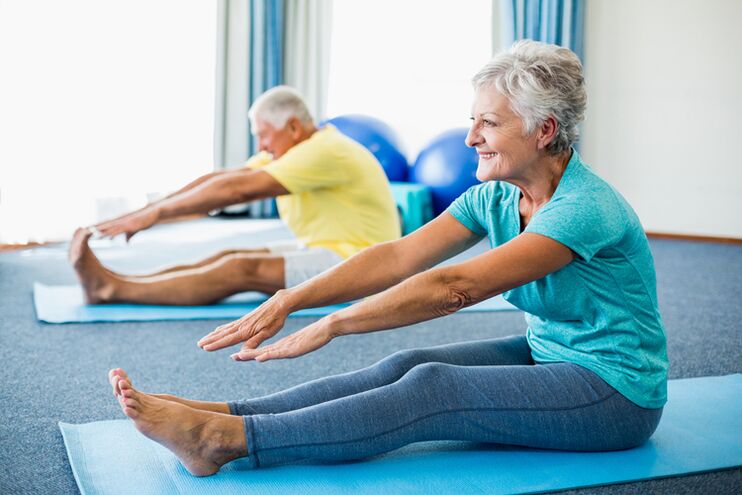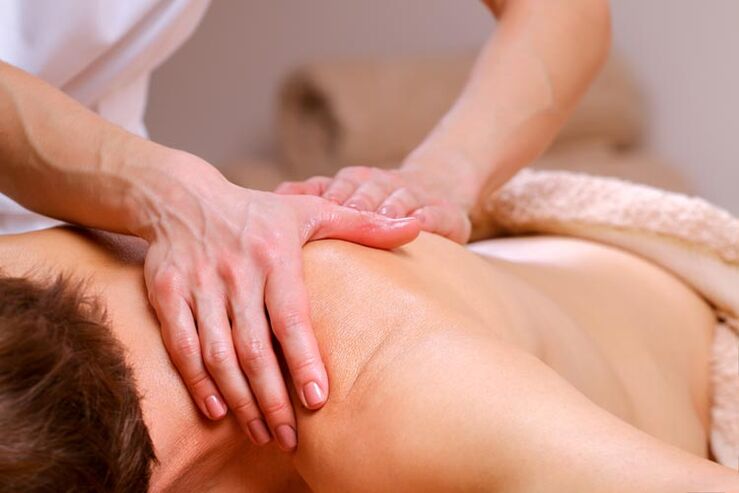
Osteochondrosis is one of the most common diseases in the world.Most people after the age of 35 will have one form or another of cervical osteochondrosis.Recently, there has been an increase in the number of people suffering from this serious disease, and a resurgence of the disease among younger people, lowering its lower age limit.This is because more and more people around the world work in sedentary jobs and lead sedentary lifestyles.At the same time, this disease is very dangerous and everyone should know what it is - osteochondrosis, how it manifests and how to treat it, be able to recognize its symptoms and start treatment in time.
Causes of cervical osteochondrosis
Osteochondrosis is one of the few diseases that is unique only to humans.This disease does not occur in other animals.The reason lies in the unique human characteristic of walking upright.The vertical position of the spine causes the vertebrae to squeeze against each other, and the osteochondral tissue of the spine gradually degenerates and deforms.
The human spine starts from the cervical region.There are seven vertebrae in this part - from the first to the seventh.The vertebrae are separated from each other by intervertebral discs.The cervical spine is a particularly vulnerable part of it, and this is primarily related to the increased mobility of the vertebrae in this area.In the neck area, the disease is mainly reflected in the intervertebral discs, which are weak links in the spinal structure.
Factors such as small vertebrae size and relative weakness of neck muscles also contribute to the prevalence of cervical osteochondrosis.In addition, the development of cervical osteochondrosis is greatly affected by insufficient blood supply to cartilage tissue.
The development of the disease is therefore a complex and lengthy process with no single cause.Although there is a link between sedentary work and cervical osteochondrosis, this disease often occurs in trained individuals, especially athletes, due to the increased load on the cervical spine when lifting weights.
Generally speaking, in older adults, degeneration of vertebral structures is an inevitable process associated with aging and weakened defenses of the body.However, cervical osteochondrosis is the most common type of pathology in which external or internal negative factors play a major role.
Factors leading to cervical osteochondrosis:
- bad posture
- spinal curvature
- back injury
- overweight
- hard physical labor
- sedentary work
- sedentary lifestyle
- Metabolic disorders
- Hypothermia often occurs
- Uncomfortable position while sleeping
- Stressed and overworked
- genetic factors
- infectious disease
- Personal anatomy characteristics, such as a neck that is too long or too short
The progression of cervical osteochondrosis
The disease has four stages.It is not always easy to determine the stage of the disease by analyzing the symptoms, since sometimes the degree of degeneration of the osteochondral tissue may not correspond to the symptoms observed in the patient.

first degree
The destructive process begins in the osteochondral tissue of the vertebrae.Generally, symptoms at this stage of cervical osteochondrosis are mild.Patients either don't notice them at all or don't associate them with spinal disease, instead attributing them to stress and overexertion.
second degree
The height of the disc begins to decrease and cracks appear on the surface.Symptoms of cervical osteochondrosis at this stage include persistent pain, weakness, and numbness in certain areas of the face.
Level three
Herniated intervertebral discs form, and the blood vessels and muscles of the cervical spine are damaged.The patient may experience dizziness and pain in the back of the head.
Level 4
Osteophytes — growths of bone tissue that protect the vertebrae from pressure that can cause pinched nerves — develop.This can lead to stiffness of movement and damage to adjacent joints.
Cervical Osteochondrosis: Symptoms
The main symptoms of cervical osteochondrosis:
- neck and shoulder pain
- muscle weakness
- increased sweating
- numbness in hands
- loss of coordination
- Dizziness
- worsening of vision and hearing
- increased blood pressure
- Headache
These symptoms are typical of cervical osteochondrosis and can appear at various stages of the disease.In most cases, only some of the symptoms on the list are observed, while the rest may not be present.People who experience symptoms of the disease for the first time do not always suspect that they have cervical osteochondrosis.So he has access to a variety of doctors—therapists, cardiologists, neurologists, surgeons.Therefore, the correct diagnosis can be made with significant delay.

syndrome
Cervical osteochondrosis can present with a variety of syndromes, i.e., typical conditions with complex characteristic signs.How they behave depends on which nerves and arteries are affected by the disease:
- vertebral artery syndrome
- cardiac syndrome
- Hypertensive syndrome
- radiculopathy syndrome
- cervical migraine syndrome
Vertebral artery syndrome is one of the most unpleasant and dangerous complications of cervical osteochondrosis.It is caused by reduced blood flow in the arteries that run along the spine and supply the brain.The syndrome presents with symptoms such as generalized or periodic dizziness, hearing and vision impairment.In some cases, fainting may occur.A variant of this syndrome is often observed in which, under normal circumstances, the blood flow in the arteries is normal, but when the head is turned in one direction or another, the blood flow drops sharply.
Heart syndrome occurs when the nerve roots that innervate the diaphragm or chest muscles become compressed.As a result, patients may experience pain similar to heartache, although there is no direct effect on the heart.However, the syndrome may be characterized by phenomena such as tachycardia, hypotension, and arrhythmias.
Hypertensive syndrome is also one of the most dangerous complications.Unlike vertebral artery syndrome, it is caused by pressure on veins rather than arteries, blocking blood flow to the head.The syndrome causes increased intracranial pressure and presents with symptoms such as nausea, vomiting, and headache.
The etiology of cervical migraine syndrome has little in common with classic migraine.It manifests as severe pain in the back of the head.The pain is paroxysmal, lasts for up to ten hours, and is accompanied by vomiting.
Nerve root syndrome is the most common syndrome of cervical osteochondrosis.Caused by compression of individual nerve roots in the cervical spine.It can manifest itself as pain in the neck, back of the head, shoulder blades, shoulders, numbness and decreased tone (to the point where no operation can be performed) in certain areas of the arms and neck.
Many times, several syndromes or individual symptoms specific to different syndromes can be observed simultaneously.
As you can see, the manifestations of cervical osteochondrosis are multifactorial, and patients are not always able to correctly identify the cause of its occurrence.If you are experiencing similar symptoms, then this is a reason to consult your doctor.
diagnosis

To confirm the diagnosis, it is recommended to consult a therapist.He'll make referrals to specialists - orthopedists, chiropractors, neurologists.
The following types of studies are used for diagnosis:
- radiography
- computed tomography
- magnetic tomography
- Neck blood vessel ultrasound scan
X-rays allow you to determine the displacement of the vertebrae, the presence of growths (osteophytes and salt deposits), and compaction of the discs.Computed tomography involves creating a series of X-rays to provide a three-dimensional view of an organ, in this case the cervical spine.It allows you to understand in detail the extent of the pathological process - the nature of nerve compression, the structure of osteophytes, the height of the intervertebral disc, etc.Magnetic resonance imaging is based on the physical effects of MRI and can provide more detailed images of spinal structures.Ultrasound examination of the neck vessels can help identify disease-induced changes in blood flow in the large vessels of the neck.
Home Treatment for Cervical Osteochondrosis
How to treat cervical osteochondrosis at home?Can it be treated?To combat this disease, the medical community has developed many methods.Some treatments can be used at home.But the process is lengthy, and full recovery is unlikely, especially in old age.However, the destructive process of the spine can be slowed and stopped at any stage of the disease.
In the initial stages of the disease, the approach is usually conservative.There are several methods to treat cervical osteochondrosis:
- drug
- therapeutic exercise
- physiotherapy
- massage
- Special device to stabilize the spine
If the disease has progressed to the final stage and the osteochondral structure of the spine has been severely damaged, surgical intervention can be used to treat cervical osteochondrosis.
drug
Use the following types of medications:
- chondroprotectant
- vitamins
- analgesics
- anti-inflammatory drugs
- Antispasmodics
If an acute pain syndrome associated with osteochondrosis occurs, the first priority is to eliminate it.Oral medications are usually used, but if they are ineffective, narcotic blockade is used in severe cases.
For muscle spasms, use antispasmodics.Muscle relaxants are most effective in osteochondrosis.Ointments containing non-steroidal drugs are used as anti-inflammatory and pain relievers.
In the presence of syndromes associated with impaired circulation and blood supply to the brain (hypertension and vertebral artery syndrome), medications are taken to relieve the adverse effects of these syndromes - antihypertensives and nootropics.
therapeutic exercise
Physical therapy is the simplest and most accessible method of treating cervical osteochondrosis, and it is also very effective.Physical therapy can also be done at home.In osteochondrosis, exercise intensity does not play a decisive role; only regularity is required.First of all, the purpose of physical education is to strengthen the neck muscles, make up for the lack of spinal function, and help it support weak vertebrae.

Daily exercise is recommended to strengthen your neck muscles.They can be very simple, involving turning and tilting the head in different directions, or they can be more complex, involving assisting the neck muscles with the hands.They can be done at home and at work.For example, if your job requires you to sit for long periods of time, it can be useful to do this type of exercise after sitting in front of your desk or monitor for an hour.However, they can only be performed outside of an exacerbation of the disease and in the absence of pain.Otherwise, it will only make the condition worse.
It is equally effective to strengthen the shoulder girdle muscles, for example through regular exercises with light dumbbells.However, lifting heavy objects (weights, barbells) is prohibited.Regular swimming can also help relieve pressure on your spine.
physiotherapy
Physiotherapy is a treatment method that uses certain physical fields and radiation to affect the body.One advantage of physical therapy is that it has minimal contraindications.
The following physical therapy methods are used to treat osteochondrosis:
- Ultrasound exposure
- laser treatment
- Effect of magnetic field
- exposure to electric current (electrophoresis)
Magnetic fields have a positive effect on damaged tissues in the body and have anti-inflammatory and analgesic effects.Ultrasound improves the metabolic processes of tissues and relieves swelling.The same goes for laser treatments.Electrophoresis is most often used in conjunction with medications because the use of electric current speeds up the absorption of medications into the body.
massage

Massage can reduce the increase in muscle tone (causing spasms) and reduce the flow of lymph fluid (causing swelling).This surgery helps improve blood circulation in the affected area, thus halting the disc's destruction process.
Other treatments
What to do about cervical osteochondrosis if traditional home treatments don't help?In order to reduce the load on the cervical spine, a special device is used - a Shants collar, which fixes the neck in a constant normal position.Recommended to wear when pain is worsening or when working sedentary for long periods of time.
To avoid getting sicker, you should also arrange a place to sleep.Pillows should not cause your neck to bend, and your mattress should be firm and even.In some cases, special sleep aids—orthopedic mattresses and pillows—can help.
















